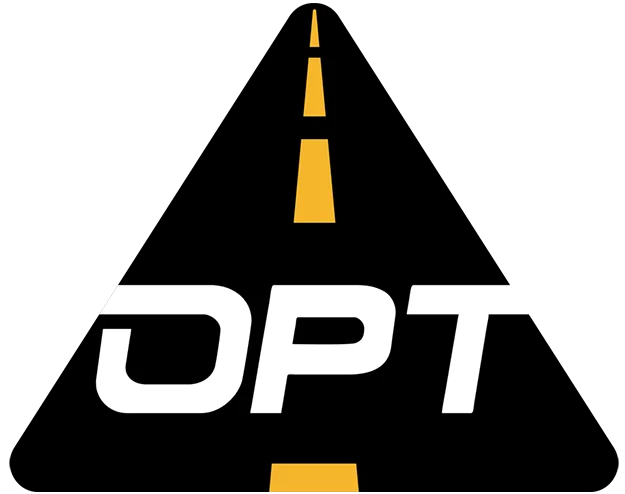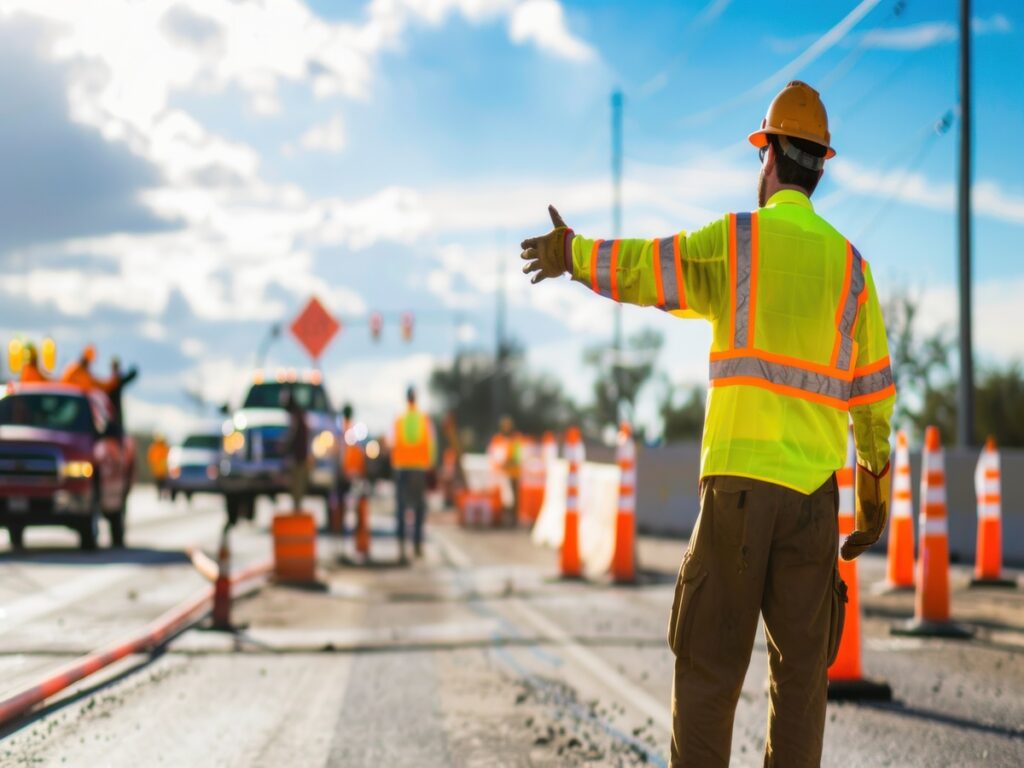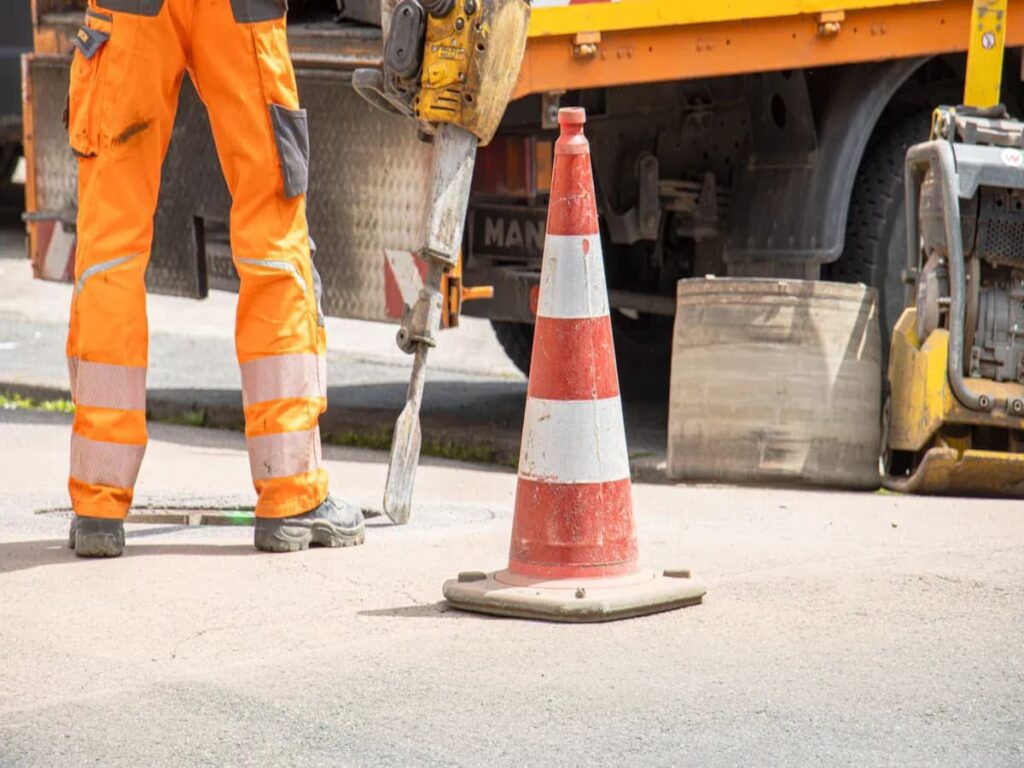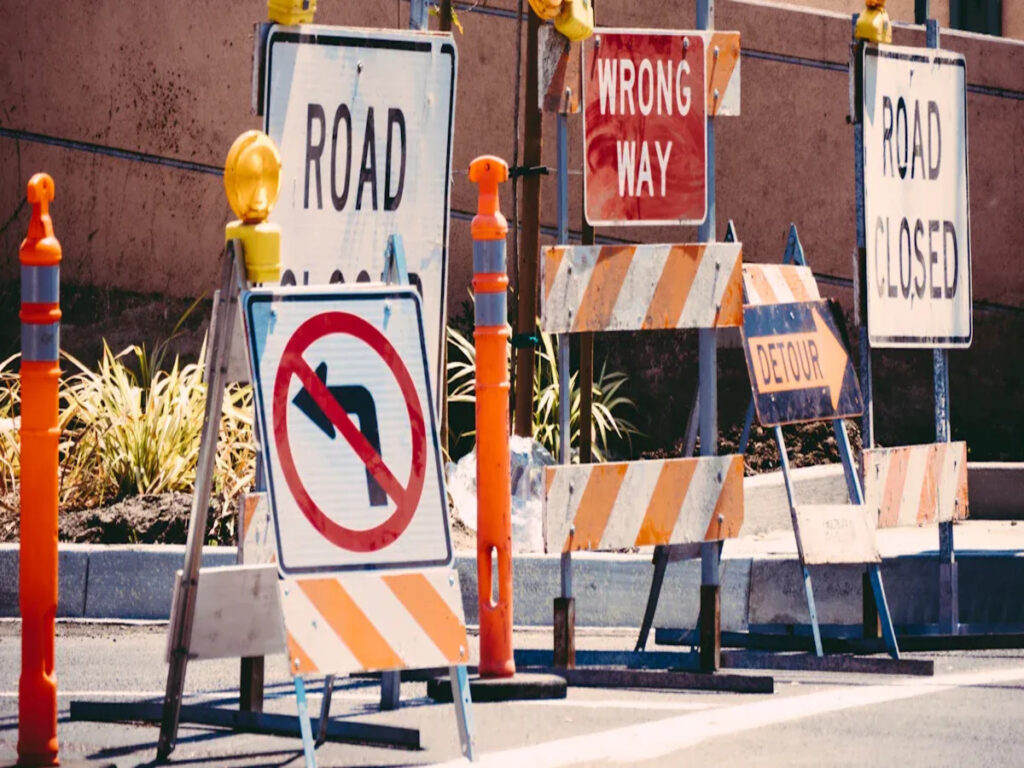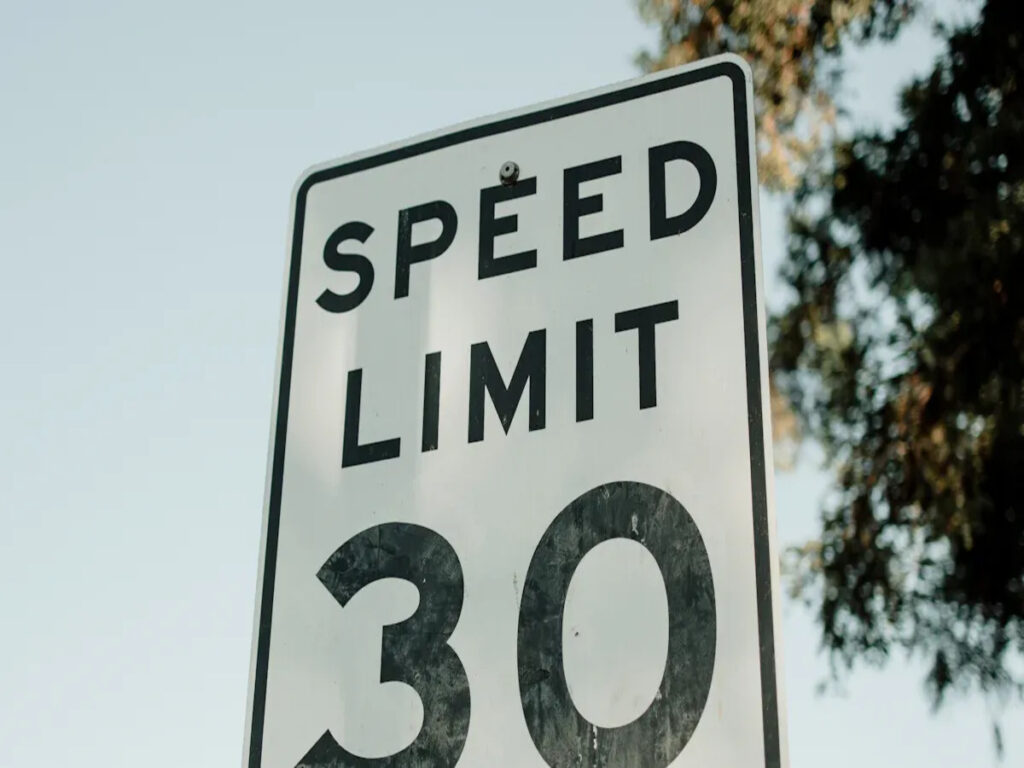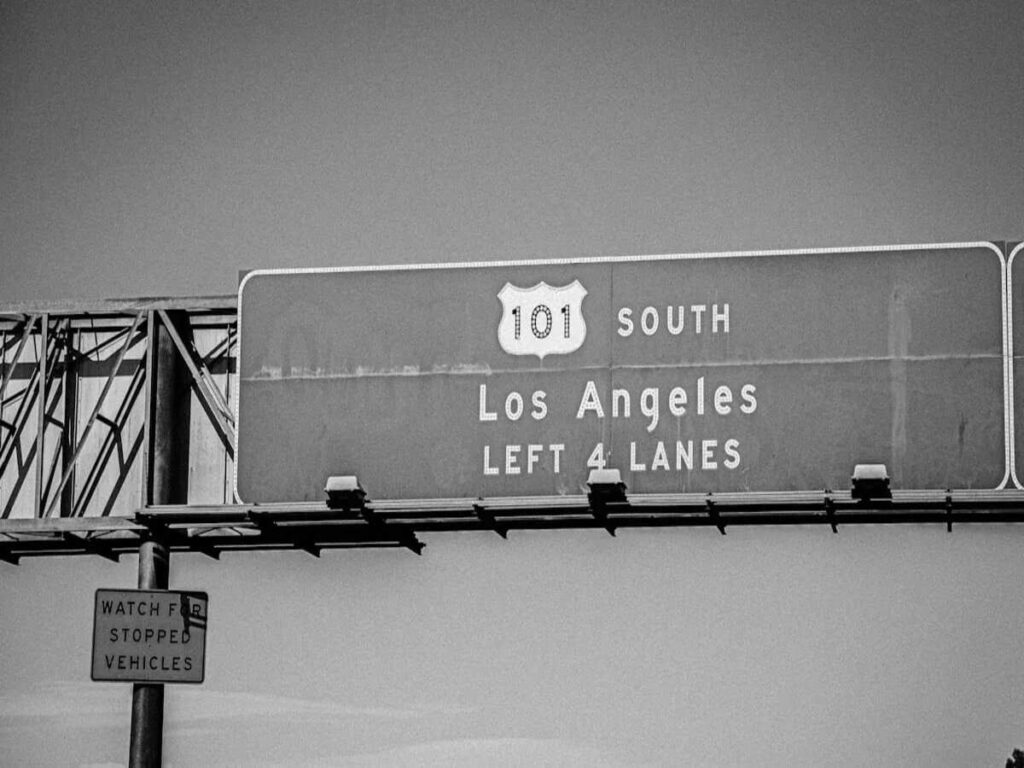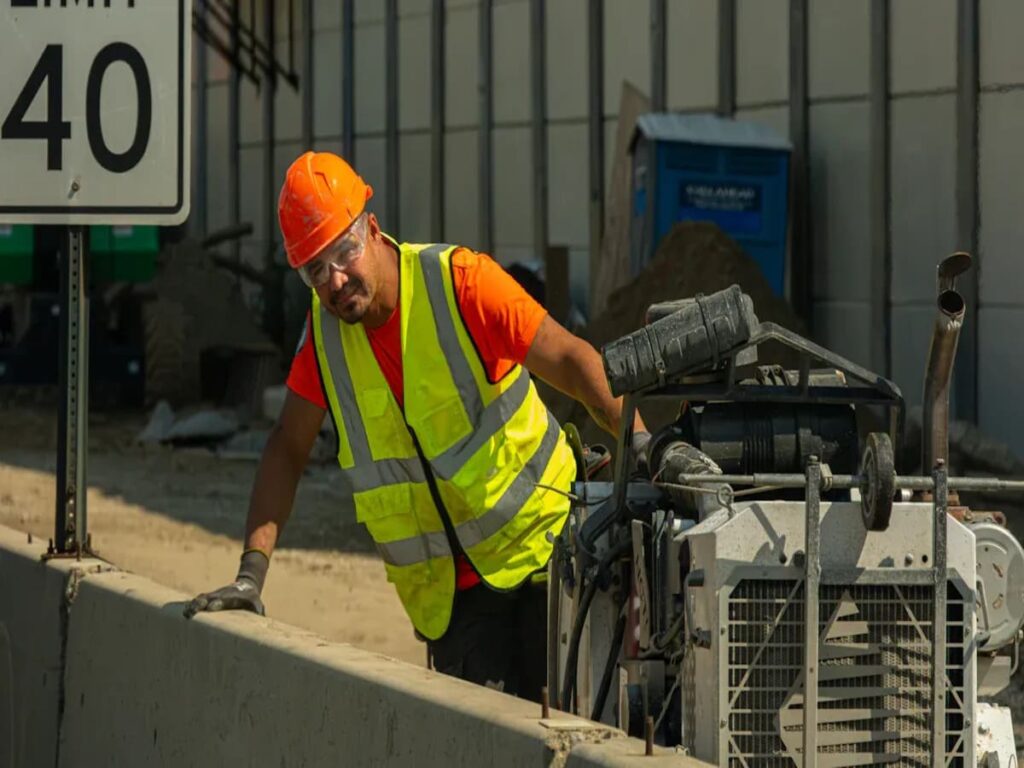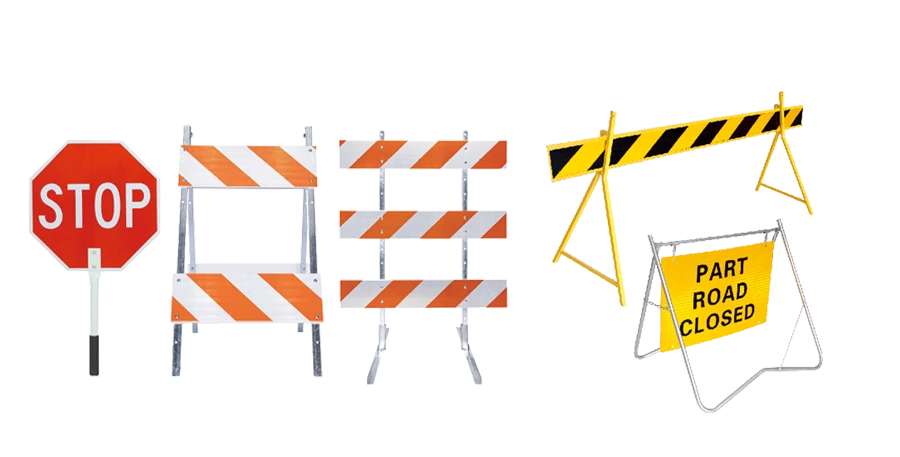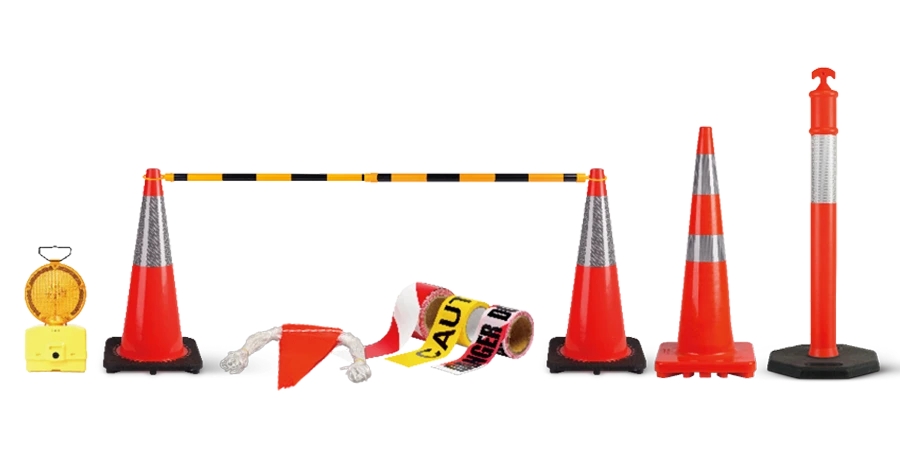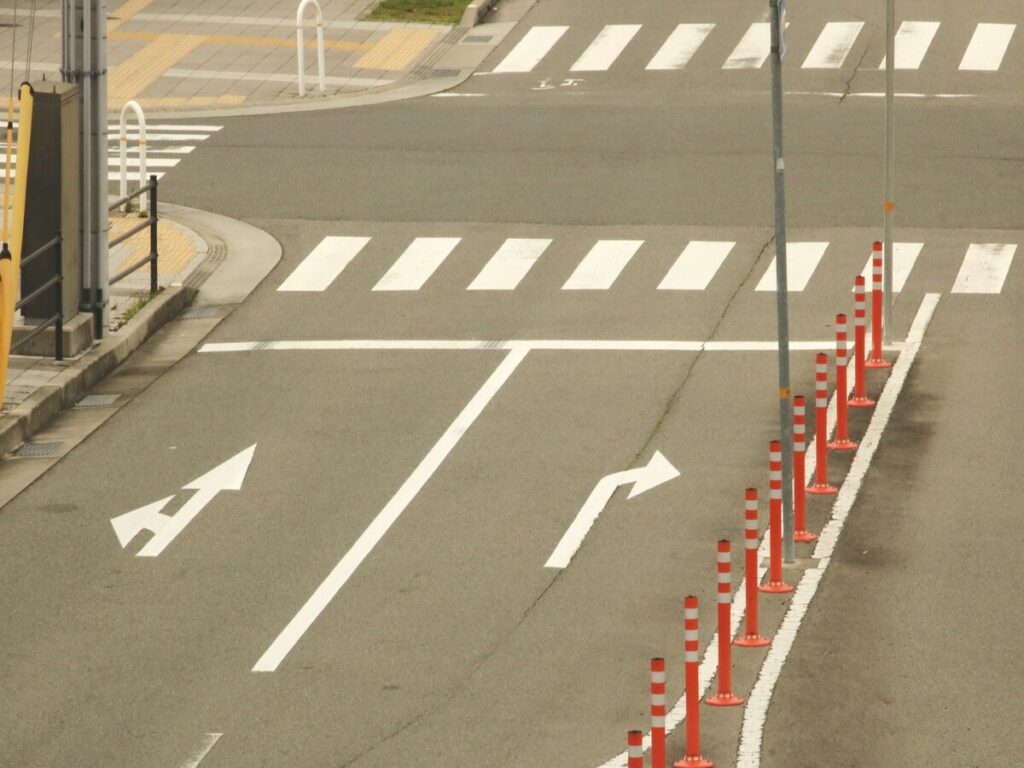
Navigating tricky roads can be hard, like at sharp turns or construction zones. Drivers need clear signs to make safe choices. Vertical Delineators and road lines help drivers see better and stay on track. For example, using center lines, edge lines, and Vertical Delineators together lowers injury crashes by 45%. Bright, reflective road markings also help drivers, especially older ones, feel safer. Each method has its own benefits, but using both often works best to keep roads safer and prevent accidents.
OPTRAFFIC specializes in high-quality Traffic Delineators. Our products are engineered to work seamlessly with existing road markings, providing maximum protection in challenging conditions. By focusing on innovation and durability, OPTRAFFIC ensures that every journey is safer and more reliable, contributing to a smoother traffic flow and fewer accidents.
Key Takeaways
- Vertical posts make roads easier to see and keep drivers safe.
- Painted lines, like lane markers, help organize traffic and avoid mix-ups.
- Combining posts and painted lines makes accidents happen less often.
- Shiny materials on signs and lines help at night or in rain.
- Clear signs and lines guide drivers to make safer decisions.
Understanding Vertical Delineators and Horizontal Markings
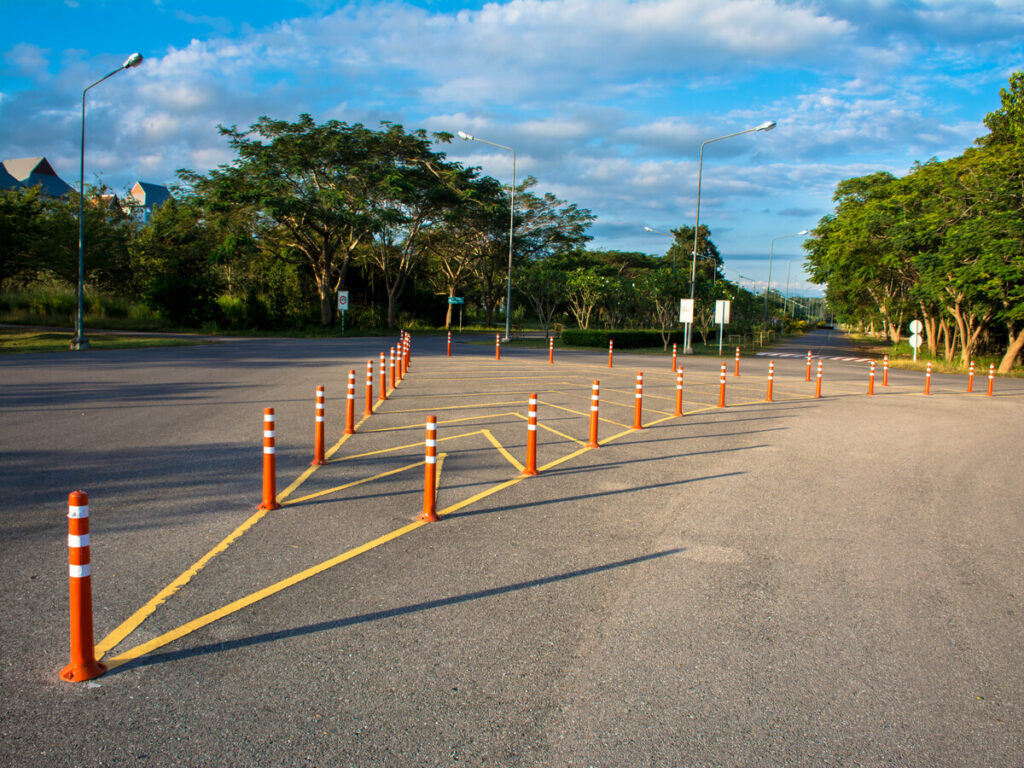
Vertical Delineators
Definition and Purpose
Vertical delineators are tall signs or posts placed by roads. They help drivers see road edges and stay safe. These signs often have reflective surfaces, making them easy to spot at night or in bad weather. Their main job is to improve visibility and guide drivers, especially on sharp turns, at intersections, or near construction areas.
Reflective T-post delineators are easiest for drivers to notice. They help all drivers, including older ones, see better.
Common Applications
Vertical delineators are used where extra safety is needed. For example:
- Sharp Curves: They help drivers see and handle turns better.
- Construction Zones: They warn about changes in the road layout.
- Intersections: They reduce confusion and guide traffic smoothly.
- Mountain Roads: They make winding roads safer, especially at night.
Horizontal Markings
Definition and Purpose
Horizontal markings are lines or symbols painted on roads. They give drivers clear instructions to follow traffic rules and stay in their lanes. These markings use reflective materials to stay visible under car headlights, which is helpful at night.
Road markings and signs are very important on curves. They help drivers, especially when visibility is poor.
Common Applications
Horizontal markings keep traffic organized and safe. Some examples include:
- Lane Divisions: Lines separate lanes and guide cars.
- Stopping Lines: They show where to stop at crossings or lights.
- Speed Reduction Markings: These slow cars down before curves.
- Construction Zones: Temporary lines guide traffic during roadwork.
Keeping edge striping contrast high on curves helps older drivers.
Challenges in Complex Road Conditions
Characteristics of Complex Road Conditions
Examples: Sharp Curves, Intersections, Construction Zones
Tricky roads include sharp turns, busy intersections, and construction zones. Each type has its own challenges for drivers. Sharp turns need quick reactions and careful steering. Intersections with many lanes or unclear signs can confuse drivers. This confusion raises the chance of crashes. Construction zones make things harder by changing road layouts. They also add temporary barriers or detours that drivers must navigate.
A study by Pang and Yu (1981) found 34 of 44 crashes happened in transition zones, showing how risky construction areas can be.
Common Issues: Lane Changes, Poor Visibility, Traffic Flow
Drivers face many problems in these tricky areas. Changing lanes is dangerous when lines are unclear or traffic is heavy. Bad weather or poor lighting makes it hard to see hazards. Traffic often slows down in these spots, causing jams and frustration.
| Study | Findings |
|---|---|
| NTSB (1992) | Fatal crashes increase during construction on two-lane roads. |
| Retting and Farmer (1998) | Special markings slowed cars, making sharp turns safer. |
Importance of Road Safety Measures
Preventing Accidents
Safety measures are key to stopping accidents. Clear signs and lines help drivers stay safe, even on tough roads. Reflective posts make night driving easier, while road lines guide cars on sharp turns. New technology, like 5G systems, also helps reduce crashes. These systems improve communication between cars and roads.
The 4 Es of safety—Education, Enforcement, Engineering, and Emergency medical services—are crucial for saving lives and reducing injuries.
Enhancing Driver Awareness
Good safety measures also keep drivers alert. Signs and lines give real-time updates about road conditions. This helps drivers make better choices. Many crashes happen because drivers are distracted or misunderstand rules. Better guidance reduces confusion and promotes safer driving.
Accurate safety data is important for fixing problem areas. Studies using simulators show how drivers react to different roads. This helps experts design safer streets.
The Role of Vertical Delineators in Complex Road Conditions
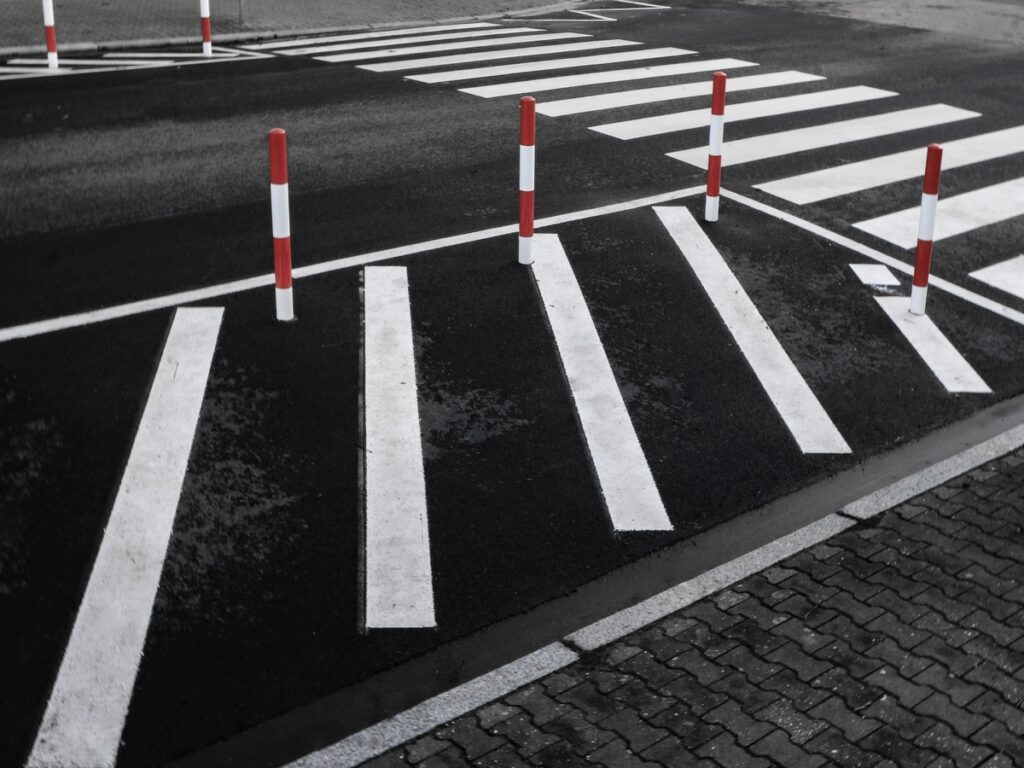
Helping Drivers See and Stay Safe
Placed in Important Spots
Vertical delineators are put in key road areas. These include sharp turns, busy intersections, and construction zones. They help drivers stay safe in tricky spots. For example, side-mounted delineators work well in risky places. A study by Ullman and Dudek (1988) showed drivers liked these for their visibility and guidance.
Reflective Surfaces for Night and Bad Weather
Reflective materials make delineators useful at night or in storms. They shine when car headlights hit them, showing road edges clearly. Safety reports prove their value in improving visibility. For example:
| Treatment | Lane Straddling Rate | Lateral Distance Shift | Subjective Rating |
|---|---|---|---|
| Treatment 1 | Low | N/A | 80% good |
| Treatment 4 | N/A | Shifted away from barrier | 80% good |
| Treatment 5 | N/A | Shifted closer to barrier | 50% good |
These results show reflective delineators help drivers avoid barriers. This lowers the chance of accidents.
Making Roads Safer
Keeping Lanes Separate and Showing Rules
Vertical traffic delineators keep lanes apart and show traffic rules. They act as guides, helping drivers stay in their lanes. This is very helpful in crowded areas or where lanes change often. They also show no-parking zones or speed limits, helping drivers follow rules.
Useful at Intersections and Turns
Intersections and turns are often dangerous spots. Vertical delineators reduce confusion and guide drivers clearly. They also encourage better lane discipline for safety. Studies show closely spaced traffic delineators affect driver behavior. Some drivers feel nervous, but most adjust by staying farther from barriers. This makes delineators a key tool for safer roads in risky areas.
The Role of Horizontal Markings in Complex Road Conditions
Directing Traffic Flow
Keeping Lanes Organized
Horizontal markings help keep traffic neat and organized. Lane lines show where to drive, reducing confusion and making traffic smoother. These lines are very helpful in places with many lane changes, like highway ramps. They guide drivers to the right path, making it easier to navigate. Reflective materials make these lines visible at night, so drivers can follow them even in the dark.
Tip: Look for lane lines when driving in new areas. They guide you and help avoid mistakes.
Temporary Changes in Construction Areas
Construction zones often change how roads are set up. Horizontal markings adjust to these changes by showing new directions. Temporary lines or symbols show detours, lane shifts, or slower speed zones. These markings help drivers move safely through construction areas without getting confused. Their flexibility makes them very useful for changing road conditions.
Preventing Accidents
Avoiding Lane Drifting and Crashes
Clear horizontal markings help prevent cars from drifting out of lanes. They act as visual reminders to stay in your lane. Studies show bright road markings make driving easier, especially for older drivers. If road markings lose brightness, accidents on dark rural roads increase by 23%.
| Study | Findings |
|---|---|
| Diamandouros & Gatscha (2016) | Bright road markings improve comfort, especially for older drivers. |
| Carlson et al. (2013) | Dimmer markings increase accidents on dark rural roads by 23%. |
Why Stopping Lines Matter
Stopping lines at crossings or intersections are very important for safety. They show where to stop so you don’t block crosswalks or enter intersections too early. These lines improve traffic flow and lower accident risks. They also protect pedestrians by marking a clear stopping point for cars.
Note: Always stop behind the line to keep pedestrians and other drivers safe.
Vertical Delineators vs. Horizontal Markings: A Comparison
Benefits of Vertical Delineators
Better Visual Warnings
Vertical delineators give clear warnings in tricky road areas. Their reflective surfaces make them easy to see at night or in bad weather. Drivers can quickly spot road edges or dangers. Studies show vertical panels work as well as barricades. They also help drivers change lanes earlier, improving safety and traffic flow.
| Evidence Description | Findings |
|---|---|
| Vertical panels vs. barricades | Vertical panels help early lane changes and are easy to see. |
Research shows reflective materials and bigger signs help older drivers. Reflective pavement markers (RPMs) increase how far drivers can see, helping everyone.
- Reflective posts help drivers see better at night.
- Bigger signs are easier to notice, especially on curves.
Easy Traffic Guidance
Vertical delineators guide drivers through tough road layouts. Their tall design and smart placement make them simple to spot. This is helpful in busy intersections or construction zones. Drivers naturally follow these signs, reducing confusion and making roads safer.
Benefits of Horizontal Markings
Clear Lane Boundaries
Horizontal markings show lanes clearly and keep traffic organized. They help drivers stay in their lanes, lowering crash risks. These markings are cost-effective because they improve safety and traffic flow.
- Thicker lines are easier to see in rain.
- Raised markings reflect light better at night.
Some markings are brighter or raised for better visibility. These features make horizontal markings essential for keeping lanes clear.
Important for Multi-Lane Roads
Horizontal markings are key for managing multi-lane roads. They guide drivers during lane changes and keep cars aligned, especially in fast-moving traffic. Raised pavement markers improve visibility at night, helping traffic move smoothly.
Drawbacks of Each
Vertical Delineators: Cost and Upkeep
Vertical delineators need regular care to stay effective. Reflective surfaces can wear out, making them harder to see. They are durable but cost more upfront and need inspections to work well.
| Marking Type | Maintenance Needs | Cost Implications |
|---|---|---|
| Vertical Delineators | Need regular checks and cleaning | Higher initial cost but last longer |
Horizontal Markings: Weather Challenges
Horizontal markings can be hard to see in rain or fog. Paint-based markings fade over time, especially at night. Thermoplastic markings last longer but must stay visible in all conditions to ensure safety.
| Marking Type | Visibility Issues | Cost Implications |
|---|---|---|
| Paint-based | Fades over time, especially at night | Cheaper upfront but costs more long-term |
| Thermoplastic | Needs to stay visible in all weather | Costs more upfront but lasts longer |
Combining Vertical Delineators and Horizontal Markings
How They Work Together
Intersections: Vertical Delineators Guide, Horizontal Markings Organize
Intersections can be tricky with many lanes and heavy traffic. Vertical delineators help drivers by showing road edges clearly. Their reflective surfaces make them easy to see at night or in bad weather. Horizontal markings work alongside them to keep lanes clear and organized. Together, they make intersections safer and less confusing.
Studies show using both tools helps drivers see lanes better. Drivers can spot lane edges and navigate intersections more confidently. This teamwork improves visibility and lowers crash risks.
Construction Zones: Vertical Delineators Warn, Horizontal Markings Adjust
Construction zones often change how roads are set up, which can confuse drivers. Vertical delineators warn drivers about hazards or detours ahead. Their tall, reflective design makes them visible even in the dark. Horizontal markings adjust to new layouts, showing lane changes or speed limits.
Using both tools together improves safety in these areas. Vertical delineators give quick warnings, while horizontal markings guide drivers through changes. This combination helps drivers move safely and avoid mistakes.
| Evidence Type | Description |
|---|---|
| Visibility Help | Vertical delineators show road edges clearly. |
| Continuous Guidance | Horizontal markings keep lanes organized and clear. |
| Safety Boost | Using both tools lowers crash risks and improves safety. |
Why Using Both is Better
Safer Roads and Better Traffic Flow
Combining vertical delineators and horizontal markings makes roads safer. This approach has cut injury crashes by 45% on many roads. Speed reduction markings, a type of horizontal marking, also help. On curves, they slow cars by 1 to 3 mph, lowering accident risks.
Drivers benefit from both tools working together. Vertical delineators give clear warnings, while horizontal markings keep traffic moving smoothly. This teamwork creates safer roads for everyone.
Adjusting to Changing Road Conditions
Changing road conditions, like construction zones or sharp turns, need flexible solutions. Vertical delineators and horizontal markings work well together in these situations. Vertical delineators warn about sudden changes, while horizontal markings adapt to new layouts or detours.
Studies show using both tools improves driver control. For example, research found combining reflective markers and post-mounted signs helps drivers see curves better. This approach gives both long-range and close-up guidance, making roads safer.
| Study | Findings |
|---|---|
| Blaauw (1985) | Suggested reflective markers for centerlines and signs for lane edges. |
| Nemeth, Rockwell, and Smith (1985) | Found better curve visibility with reflective markers and signs combined. |
By addressing both short-term and long-term needs, this method improves safety and adapts to changing roads.
Case Studies: Effective Use of Vertical Delineators and Horizontal Markings
Urban Intersections
Reducing Accidents with Both Tools
Urban intersections are busy with lots of cars and lane changes. These areas can get confusing, especially during rush hours. Vertical delineators and horizontal markings work together to make them safer. Vertical delineators help drivers see lanes clearly. Horizontal markings, like stop lines and arrows, organize traffic and prevent crashes.
For example, intersections with bright vertical signs and clear markings had fewer problems. Fluorescent signs reduced conflicts from 153 to 136. Standard signs, however, saw conflicts rise from 160 to 187. This shows how using both tools improves safety at intersections.
Tip: Follow lane markings and watch for vertical signs to stay safe.
Mountain Roads
Better Visibility on Curves
Mountain roads are tricky, especially at night or in bad weather. Vertical delineators and horizontal markings help drivers see better and stay safe. Reflective delineators shine in headlights, showing road edges clearly. Horizontal markings, like edge lines, guide drivers through sharp turns.
Studies found side-mounted delineators work better than top-mounted ones. Retroreflectivity (RL) is key for night driving. A drop of 100 mcd/m²/lx in RL leads to 23% more single-car crashes on dark rural roads.
| Metric | Description |
|---|---|
| Retroreflectivity (RL) | Higher RL helps drivers see better at night. |
| Accident Correlation | Lower RL causes more crashes on unlit rural roads. |
Over 80% of drivers rated reflective delineators highly. This proves they make winding roads safer.
Construction Zones
Temporary Safety Measures
Construction zones change normal traffic patterns, causing confusion and accidents. Vertical delineators warn about changes ahead. Horizontal markings, like temporary lines and arrows, guide drivers through safely.
In studies from New York, Mississippi, and Texas, speeds dropped by up to 5 mph after these tools were added. On two-lane roads, speeds slowed by 1 to 3 mph within 90 days.
| Study Location | Speed Reduction (mph) | Timeframe |
|---|---|---|
| New York, Mississippi, Texas | 0 to 5 | Immediate and long-term |
| Two-lane road segment | 1 to 3 | First 90 days after installation |
Using both tools together keeps traffic moving and reduces accidents in construction zones.
Note: Watch for temporary signs and markings in construction areas to stay safe.
Vertical delineators and horizontal markings each help make roads safer. Vertical delineators help drivers see better in tricky spots like curves or intersections. Horizontal markings keep traffic organized by showing lanes and stopping points. Together, they form a strong safety system for complex roads.
Studies prove that using both tools improves driver awareness. For example:
- Drivers saw 148% farther with post-mounted delineators (PMDs) and raised pavement markers (RPMs) together.
- RPMs alone helped drivers see 112% farther than just lines on the road.
Horizontal markings are also cost-effective. Their safety benefits are worth much more than their costs, with benefits being about sixty times greater.
Adjusting these tools to fit different roads works best. Whether it’s a busy intersection or a curvy mountain road, using both methods improves safety and traffic flow.
FAQ
1. What are vertical delineators, and where should you use them?
Vertical delineators are tall posts or signs by roads. They show road edges or warn about dangers. Use them on sharp turns, at intersections, or in construction areas to make driving safer.
Tip: Reflective delineators help you see better at night.
2. Why are horizontal markings important for road safety?
Horizontal markings, like lane and stop lines, keep traffic organized. They help drivers stay in their lanes and follow rules. These markings are very helpful on busy roads and in construction zones.
Note: Follow road markings to avoid mistakes and stay safe.
3. Can vertical delineators and horizontal markings work together?
Yes, they work well together. Vertical delineators warn about dangers, while horizontal markings guide drivers. Together, they improve safety and reduce accidents.
Example: At intersections, delineators show edges, and markings organize lanes.
4. How do reflective materials improve road safety?
Reflective materials make signs and lines easier to see at night. They shine under headlights, showing road edges, lanes, and dangers clearly. This helps prevent accidents.
Emoji Reminder: 🌙 Reflective signs = safer night driving!
5. What should you do in construction zones with temporary markings?
Follow temporary markings and vertical delineators carefully. They show detours, lane changes, or speed limits. Pay attention to these signs to drive safely.
Pro Tip: Slow down and stay alert in construction zones to avoid problems.
